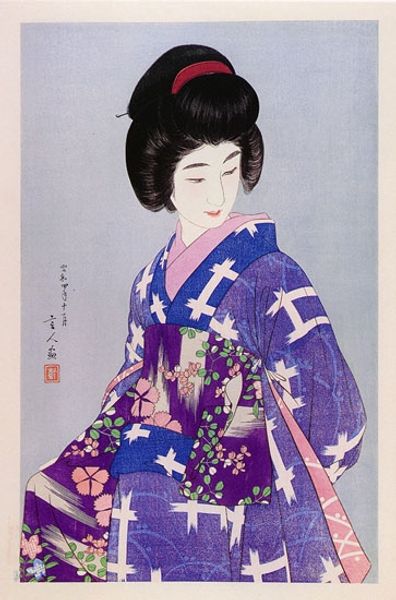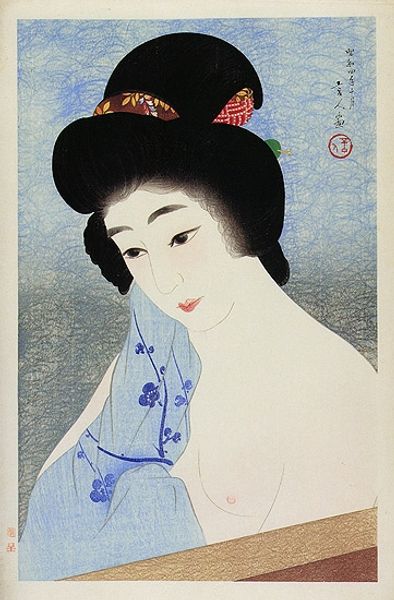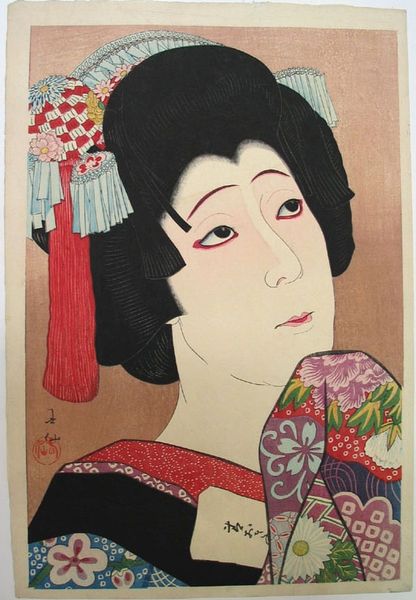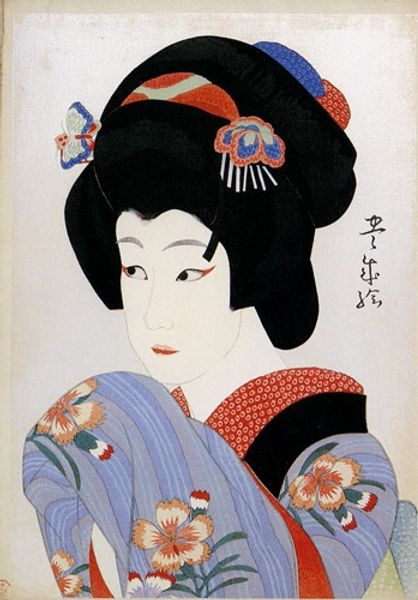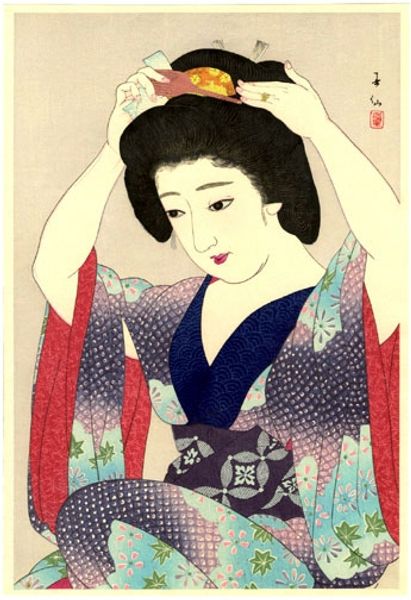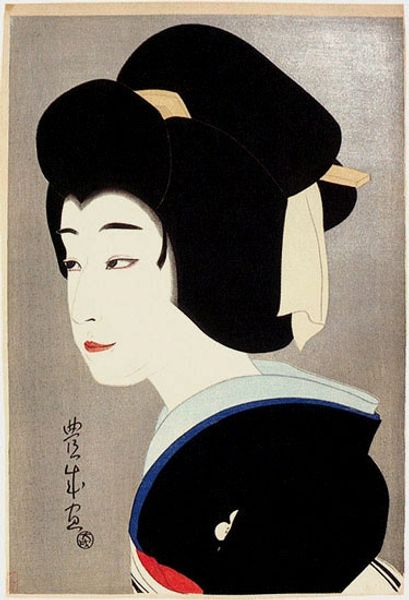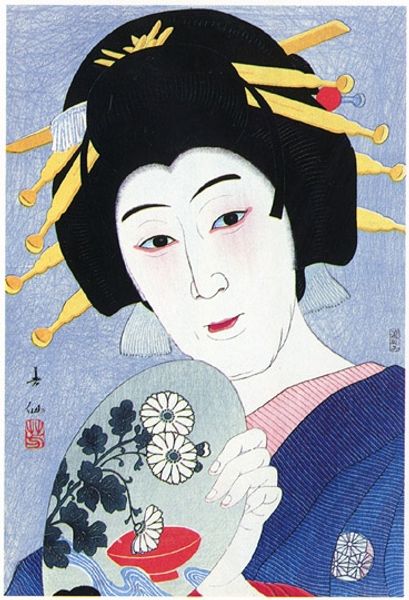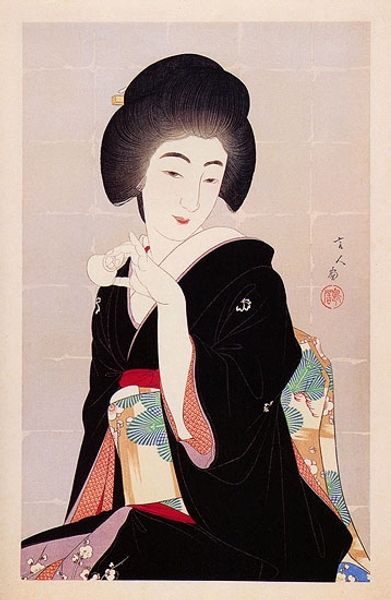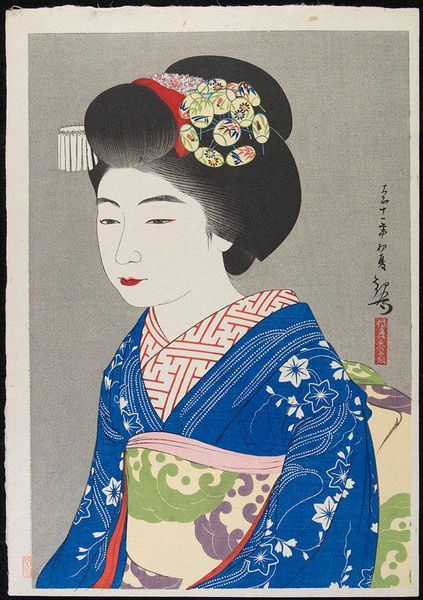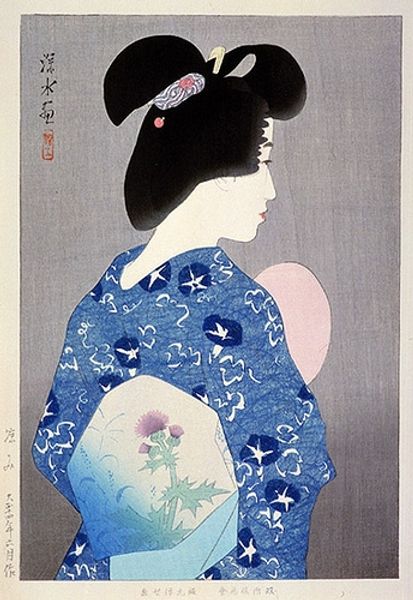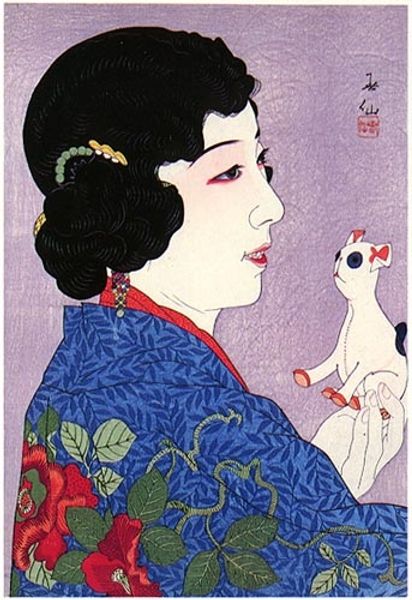
Copyright: Public domain Japan
Editor: This is Natori Shunsen's woodblock print from 1951, "Nakamura Utaemon as Hanako in Musume Dojoji." There’s such stillness in her face, but the robe seems to suggest movement and the colours almost vibrate with energy. How do you interpret this work? Curator: The print captures Nakamura Utaemon, a Kabuki actor, in the role of Hanako. The 'Musume Dojoji' play itself is laden with symbolism. Hanako, initially presented as a Shirabyoshi dancer, reveals herself as a vengeful serpent. Knowing this, consider the color white used in her makeup – purity but also the pallor of grief, don't you think? And her intense stare carries a wealth of pent-up emotions, which I feel reflect the cultural anxieties and transformations Japan faced after World War II. Do you see the symbolic link? Editor: Yes, now that you mention the postwar context and her stare, there’s an intensity I didn’t quite pick up on at first. I was mainly focusing on the aesthetic qualities. Curator: Absolutely, it is easy to see the surface level; the beauty of Ukiyo-e often distracts us from deeper interpretations. Look closer at the patterns on the robe, they might signify specific schools or lineages within Kabuki. We should study it more carefully! Editor: I'm beginning to appreciate how layers of cultural meaning are embedded in these portraits. The seemingly simple image is so rich and powerful, carrying more significance than initially perceived. Curator: Precisely. These works operate as cultural memory capsules.
Comments
No comments
Be the first to comment and join the conversation on the ultimate creative platform.
